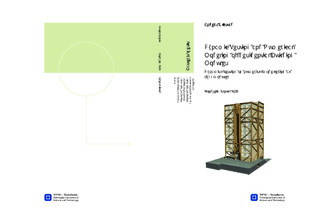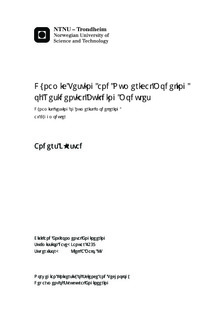| dc.description.abstract | This thesis was initiated by a project planing the world's tallest timber building in Bergen, Norway, (the VHT project). The concept of the building is based on a load baring glulam frame with building modules stacked inside to create the residential area of the building. Calculation done by Sweco showed that more damping was needed to lower the accelerations in the top floor of the building. Since little was known about the dynamic properties of building modules and whether these could be used to increase the damping of the building, a survey was wanted. In this master thesis the dynamic properties of the building modules have been evaluated. This has been done by preforming dynamic test on building modules similar to those planed for the VHT project. Two test protocols were used to test the modules, an experimental modal analysis method using a modal hammer and a system identification method. The goal of the tests was to identify the modal frequencies, damping ratios and mode shapes of the building modules.The tested modules were modeled in a finite element (FE) method program and scaled to fit the size of the VHT modules. This way the dynamic properties of the VHT modules could be estimated. Simple shear frame models of the VHT modules were made to be implemented in a larger model of the VHT building to evaluate the effect of the modules on the entire structure. Several detailed FE models were made to evaluate how the separate parts of the modules influenced the dynamic response of the modules. An evaluation of the dynamic properties of the sound reducing material Stepisol was also done by dynamic testing in the lab and FE modeling.It was found that the tested modules had two translational modes and one torsional mode. The overall damping ratio of the modules was found to be roughly 3%. From the numerical tests the stiffness of the module walls were found to be more or less constant per meter wall. The walls can therefor easily be scaled for similar modules with different dimensions to predict the dynamic properties of the new modules.The Stepisol was found to influence the dynamic properties of the stacked building modules severely. The lab tests showed that Stepisol has a high material damping that helps increasing the damping in the modules. The FE models showed that layers of Stepisol makes the stacked modules a lot less stiff and it is a key feature that can be used to alter the dynamic behavior of stacked modules.KEYWORDS: building modules, dynamic response, timber buildings, experimental modal analysis, system identification, FEM analysis, damping | nb_NO |

